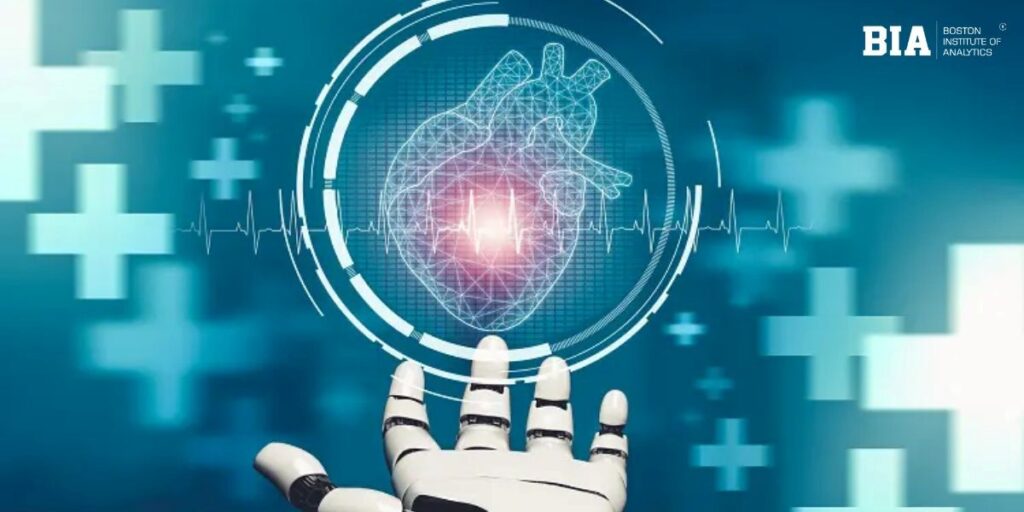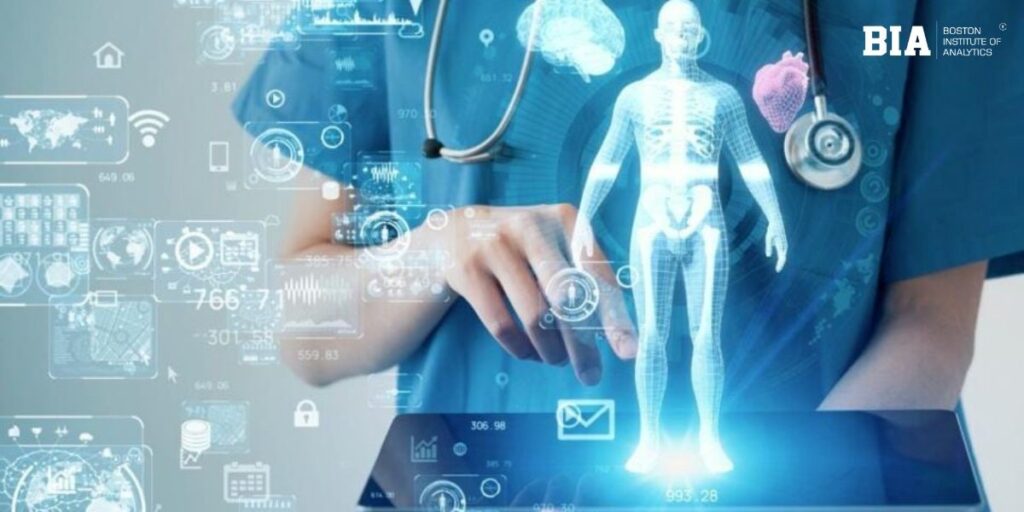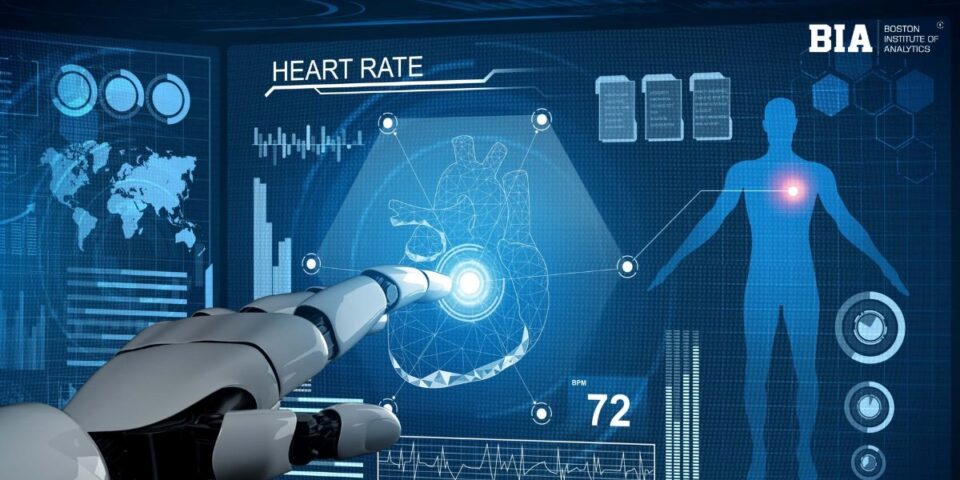The healthcare sector finds itself at the dawn of a revolution motivated by the inexorable progress of data science. Central to this change is Machine Learning (ML), a subset of Artificial Intelligence that allows computer systems to learn from large quantities of data and arrive at predictions or decisions without being programmed to do so. These sophisticated analytical tools are no longer confined to technology laboratories – they are, in fact, in hospitals and clinics now where they are quietly, but powerfully, saving lives because of their predictive model.
This article takes a closer look at the seismic shift that ML has created in medicine by examining its life-saving applications, skills needed to leverage its power, and what lies ahead for this vital nexus of technology and patient care.
Machine learning is revolutionizing healthcare by predicting disease before it strikes, and helping improve patient outcomes using data-informed foresight. A machine learning course will help you understand how these predictive models are impacting the future of medicine.
The Power of Prediction: Early Warnings and Rapid Diagnostics
Machine Learning is most impactful when it identifies, beforehand, risks that could evolve into an emergency or disaster. Machine Learning (ML) models can analyze real-time data from Electronic Health Records (EHRs); patients’ lab results; and continuous patient monitoring, as well as other clinical information, to find subtle trends that humans cannot see. Many times, Machine Learning provides enough of an advance warning for care intervention to save lives.
Sepsis: A Race Against Time
Machine Learning is done at the University of Pennsylvania Health System, developing a system to continuous monitor a patient’s risk of developing sepsis. Sepsis is a life-threatening response to infection, and it is one of the main causes of hospitals deaths. Using a linked Machine Learning model, healthcare professionals use the system to continuously evaluate patient risk of sepsis, And, once the risk reaches a predetermined threshold, the system applies immediate alerts for healthcare professionals to take action. By using the ML early warning system for risks of sepsis, healthcare professionals are able to contribute life-saving antibiotics hours before the indication that would normally cause concern. The early warning from the Machine Learning system reduces mortality rates and ICU transfer rates significantly.
Precision in Medical Imaging
In addition to early warning signs, ML is transforming the diagnostic field through medical imaging. Deep Learning algorithms, especially Convolutional Neural Networks (CNNs), can be trained with millions of scans (X-rays, MRIs, CT scans) to sub-treaties that are difficult to see. These predictive models help radiologists identify cancerous tumors, diabetic retinopathy, and neurological conditions, making this process much quicker and more accurate. In high-volume scenarios, not only do they improve diagnostic precision, but they also shorten the interval between scan and diagnosis, leading to faster initiation of important interventions.

Tailoring Treatment: The Age of Personalized Medicine
The widespread “one-size-fits-all” paradigm for medical practice is coming to an end with the hyper-individualized medical future of personalized medicine, supported by Machine Learning (ML). ML is particularly proficient at amalgamating large spaces of information genomic information, lifestyle and socio-economic influences and patient-specific disease with biomarker information to generate treatment information that is particularized for the individual patient.
Cancer and Genomics
In oncology, ML models are currently evaluating tumours for genomic information as well as evaluating extensive clinical trial datasets to assess how a specific patient will respond to chemotherapy and immuno-oncology therapy. These models, such as IBM Watson for Oncology, have shown the ability to provide meaningful personalized treatment recommendations based on extensive medical literature and medical record history databases. This application of ML decreases the destructive trial-and-error phase of medical treatment and provides the patient with the most effective and least toxic medical therapy from day one. Additionally, ML is outpacing agility in major pharmaceutical in terms of getting drugs through discovery and development process to the market, determining drug efficacy and safety of proposed new drug candidates while expediting trials and time of delivery from laboratory to the market.
Population Health and Outbreak Forecasting
Predictive models in machine learning also scale to serve whole communities. Through the analysis of public health data, environmental variables, and social media statistics, algorithms can forecast the increase of infectious disease or the number of emergency department visits. A prime example is BlueDot, a company out of Canada, whose machine learning-based system reported an increase in unusual pneumonia cases in Wuhan, China, in late December 2019, demonstrating the potential of machine learning to be an early warning system for global pandemics.

Building the Future: The Need for Machine Learning Courses
The possibility of using ML to enhance and transform medicine is currently held back by one potential barrier: a shortage of healthcare professionals with appropriate skills. In this context, we see the importance of Machine Learning courses that can train healthcare data scientists for the future.
A comprehensive machine learning course for healthcare professionals typically covers:
- Data Science Fundamentals: Demonstrating the ability to clean, prepare, and handle sensitive patient data (EHRs, genomic sequences) in an ethical, responsible manner.
- Algorithm Application: Hands-on experience with supervised and unsupervised learning algorithms; for instance, using a linear regression algorithm to predict hospital readmissions or clustering techniques to identify a subgroup of patients at high risk of readmission.
- Deep Learning: Experience with training in neural network techniques for complex tasks including image recognition from radiology, as well as the application of natural language processing (NLP) for analyzing unstructured clinical notes.
- Ethical and Legal Frameworks: Understanding the important issues of privacy, model bias, and the issues associated with explainable AI (XAI), which is the challenge of having doctors understand why an ML model recommended a particular action.
Machine Learning courses such as this, specialized for the health sector, are critical for clinicians, data engineers, and biomedical researchers to develop multidisciplinary expertise required to ensure that predictive machine learning models are safe, effective, and ethically engineered in a way that will ultimately save lives.
Challenges and Final Thoughts
Though the future is indeed exciting, the application of Machine Learning in clinical practice is not without obstacles. The infamous “black box” nature of complicated models that obscures the rationale behind a prediction will continue to be a barrier that XAI works to ameliorate. The quality of data, bias in training datasets that can worsen health inequities, and the ongoing process of approving these technology components within a regulatory context even addition of new technologies into a current workflow require careful consideration and rigorous implementation case-by-case each time a particular technology is applied. However, the direction is clear. Machine Learning has already proven its ability to be one of the most powerful tools in the medical toolkit; we have seen this allowing healthcare providers to provide early alerts for sepsis, and even transform drug development. Over the next ten years, we are going to see increased integration of ML into all aspects of healthcare, moving away frequently using medicine in a reactive approach into a proactive approach. For anyone that wants to be a part of this life-saving opportunity, the first critical step will be to become enrolled in a machine learning course.
